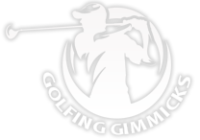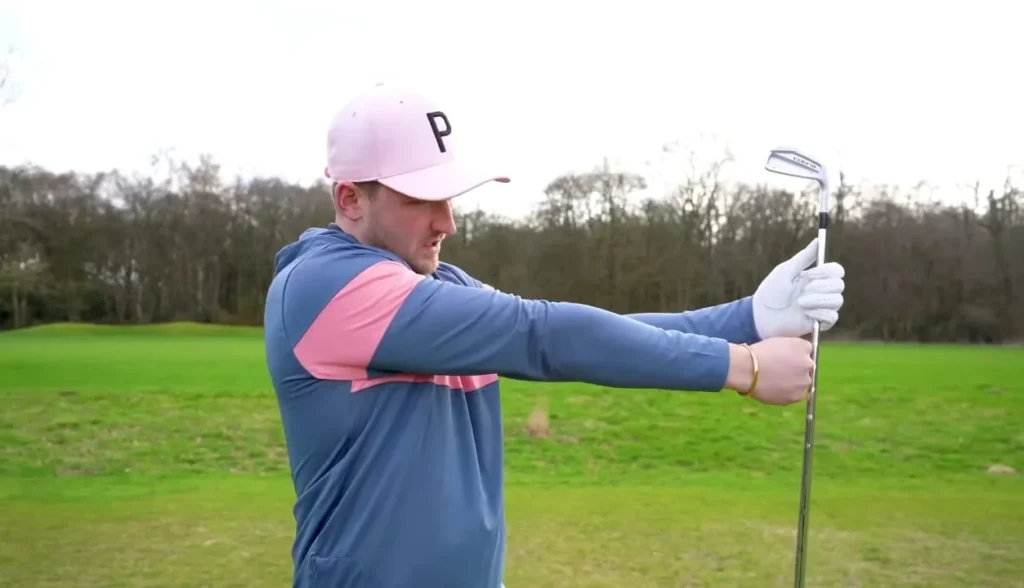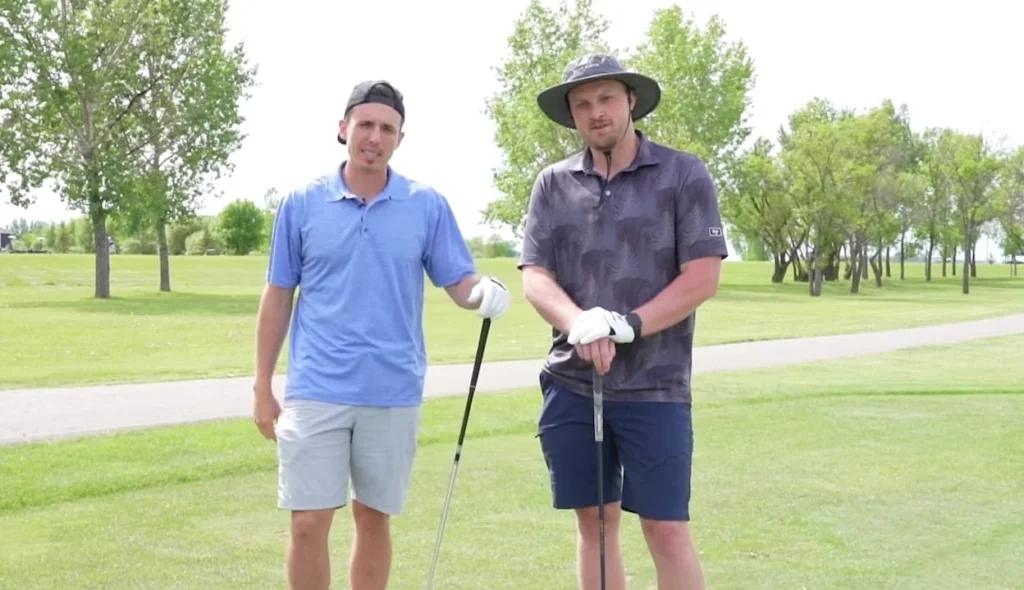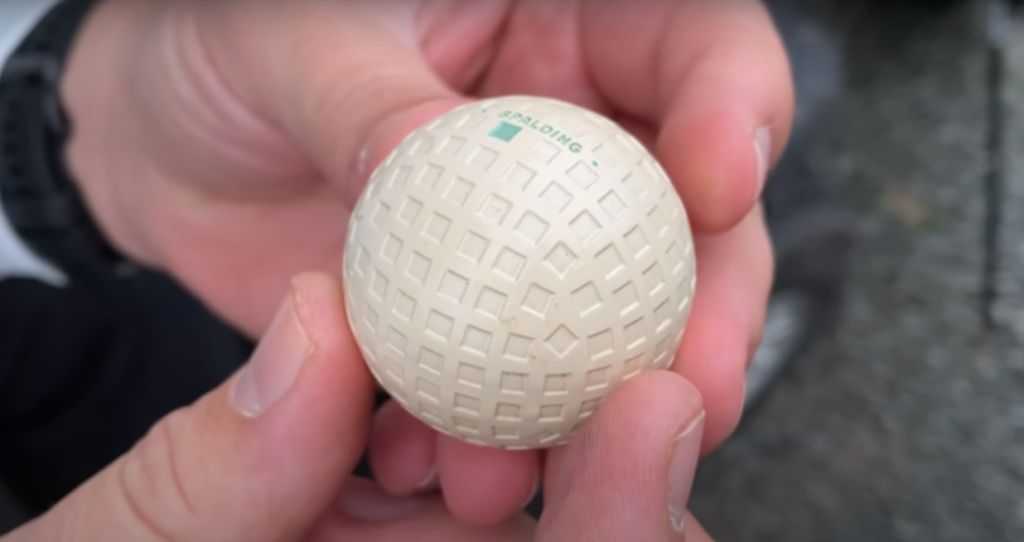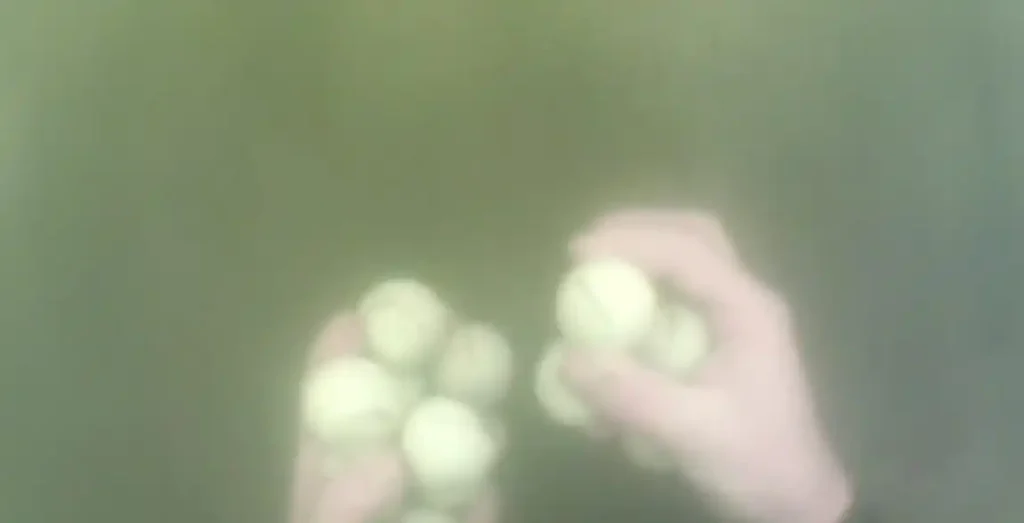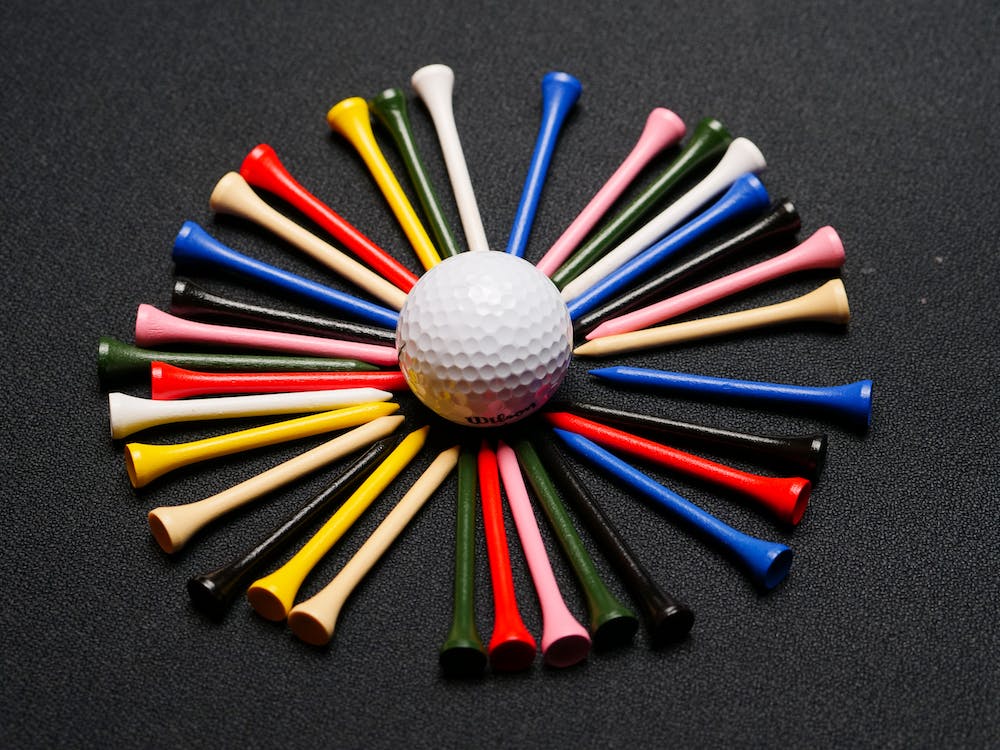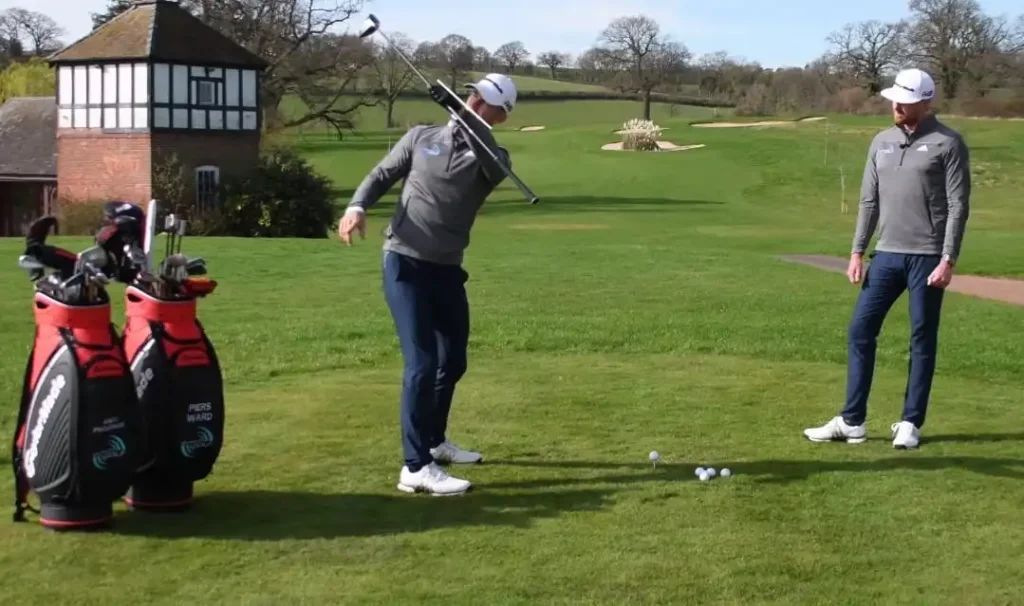Imagine that you’re about to hit that ball in front of a swarm of spectators, including your friends, family, and possibly that chick you want to impress with your amazing golf skills. Then the worst thing happens; you end up shanking the golf ball. Instead of the clubface, the bothersome hosel makes contact with the ball, sending it straight into the crowd, perhaps hitting that woman in the face. How embarrassing, right? Well, it’s one of the most irritating and face-reddening things to happen to a golfer. Just watch this video of a lady shanking twice in a row. So, how to stop shanking the golf ball?
A lot of golfers online are asking this question: “How to quit shanking the golf ball?” If you can’t stop shanking the golf ball, your golfing career is over. However, this article will explain to you what shanking is and how you stop it from happening. We’ll discuss the reasons for shanking the golf ball and some amazing drills to stop shanking the golf ball. So, bear with us in this piece as we reveal the secrets to escape the curse of shanking. Hope you learn something and read more content on this site.
Understanding the Anatomy of a Shank
Before delving deeper into its causes, it’s vital that we fully grasp what constitutes a golf shank. A shank occurs when a shot connects with the hosel of a club instead of hitting its intended sweet spot impact, leading to mis-hits that cause sharply rightward trajectory changes or result in shorter distances. Now, we can discuss the reasons for shanking the golf ball.
Common Culprits of Golf Shanks
Hands placed too far forward may lead to golf shanks. This happens because the clubface tends to move rightward during swinging motion and open up further away from ball contact, therefore, resulting in inconsistent ball contact that may even cause unwanted misalignments during your swing that lead to shanks.
Sliding Instead of Rotating Hips
Shanking can occur due to improper hip rotation during a swing, with hips often shifting forward rather than rotating smoothly along their path. This movement often causes hips to rise higher along their path of travel causing complications with swing trajectory and possibly leading to an accidental heel strike or even worse hosel or heel strike. Proper rotational control of hips is paramount to an efficient swing path and creating effective shots.
Poor Posture and Spacing
Shanks can often be traced back to poor posture and spacing issues. When arms crowd together during swinging, searching for space, the risk increases that the hosel will come crashing into the ball causing misalignments that lead to mishit shots, particularly if arms extend outward, disrupting their natural path of the swing. If you can’t stop shanking the golf ball then it’s probably because of your poor posture, which you should fix right away.
Drills to Halt the Shank Menace
If you’re interested in addressing and combating shanking, adopt some specific drills to conquer this problem. We’ve mentioned some effective drills to stop shanking the golf ball. These simple yet powerful ways will prevent this embarrassing moment from happening again.
Use of Markers
The use of whiteboard markers or foot powder spray is useful for golfers to pinpoint the point where their ball first makes contact, enabling them to make adjustments based on this knowledge of where contact occurred. This can assist them with making necessary alterations to their swing based on this new knowledge of where the ball meets course.
Additional Ball Placement
Put another golf ball outside the one being struck and see if its hosel hits it as this indicates that your club would strike two balls with each swing of your club if its toe struck another one. Now, this drill has helped many golfers focus on making accurate swing paths. We’re pretty certain that you’ll quit shanking the golf ball after you master golf ball positioning successfully.
Plane Slider with Formed Grip
Add a plane slider with a formed grip and additional weight for targeted practice, helping refine swing mechanics for a more consistent, controlled swing path. This drill promotes better swing mechanics. If you can’t stop shanking the golf ball then use this simple method to overcome this issue. Now, let’s move on to discussing some more tips for shanking prevention.
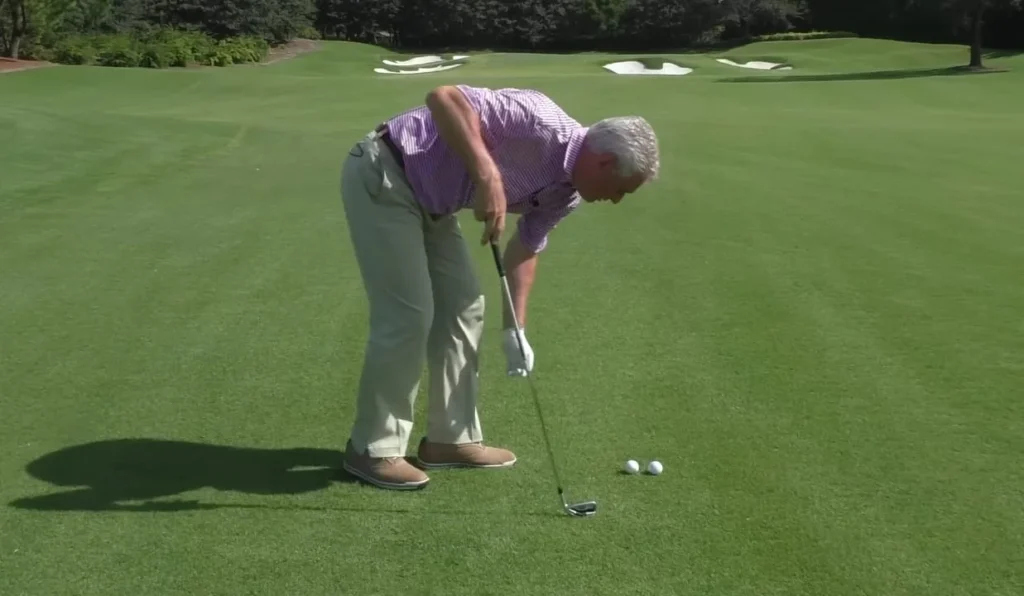
Tips for Shanking Prevention
Enhance Swing Mechanics
Focusing on posture, forward weight distribution, and an ideal swing path are crucial steps toward improving overall swing mechanics and decreasing shank risks. That’s a great way to make sure you don’t shank those spheres.
Keep Arms Down
Keep your arms down for a more controlled and effective swing. By placing the ball close to the club head, an upward swing closer to your body is encouraged, creating more effective strokes with controlled and effective results.
Strengthen Your Grip
Counter a weak grip by turning the left hand more to the right and strengthening the grip position with both hands, for an enhanced grasp position that helps stabilize the club during its swing. A strong grip is the bridge between the ball and the clubface.
Weight Distribution and Posture
Maintain an even weight distribution to reduce tension in your hands and arms and ensure balance throughout your swing. A proper distribution can result in more stable, controlled swinging. Read up on improving your posture effectively.
Maintain Chest Height
Avoid shanks by maintaining an elevated chest during impact to ensure more consistent ball striking. This approach should help avoid shanks.
Toe Flexion
Flex your toes upward during the initial phases of a swing to promote controlled and more stable movement. Flexing will result in an even and balanced swing motion.
Mind Over Matter
Minimizing mental chatter during the swing to reduce shank issues. Focus and clarity of thought are necessary components for consistent ball striking. Now, let’s discuss some factors that may encourage you to shank that ball.
Other Factors Contributing to Shanks
Changes in Swing Dynamics
Unexpected changes to swing path, clubface angle, weight distribution, grip size, or stance can result in unexpected shanks. Maintaining consistent swing dynamics for reliable ball contact. If you can’t stop shanking the golf ball then these are some possible reasons why.
Address Position and Mental Factors
Factors such as address position, mental state, and unnecessary tension may contribute to the shank. Focusing on these aspects helps maintain an efficient golf swing. These are some other reasons for shanking the golf ball and making a mockery of yourself on the golf course.
Shanking with Different Clubs
Shanking with Wedges
Shanking can happen when using wedges because the clubhead moves closer to the ball during the swing, so paying close attention to clubhead positioning when using wedges to prevent shanks from happening is of utmost importance to avoid shanking.
Shanking with an 8-Iron
Grip pressure, weight distribution issues, and hesitation during the swing can contribute to shunning an 8-iron. Knowing which clubs present different challenges is paramount in developing an all-rounded golf game.
Equipment to Alleviate Shanking
Don’t get embarrassed if you’re having trouble with golf ball shanking. We’ve researched four amazing products to help you with this problem. You can buy golf grips, swing trainer aids, and the right irons to avoid shanking. Now, all you have to do is to click on these links, view the pics uploaded by the seller, check the most reviews, and buy a product that you like. You can alleviate the problem of shanking with practice, and a right product will accelerate the process of self-improvement. So, invest on your passion, invest in your performance, and invest in transforming yourself into an excellent golfer. Try these simple yet amazing products:
| Tri-Line Golf Ball Marker – Alignment Aid with Marking Pens | More Information |
| Year-Round Golf Swing Trainer Aid & Kit | More Information |
| Cross Corded Golf Grips | More Information |
| Callaway Golf MD5 Jaws Wedge | More Information |
| Premium Golf Irons Individual – RH, 8 Iron Single | More Information |
Conclusion
Overcoming the “shank” can be a bit of a hassle for amateur golfers – nay – even professionals. A lot of golfers just can’t seem to stop shanking the golf ball. However, this article has shared a few pretty impressive drills to help you conquer this formidable enemy. Consistent practice, a focus on fundamentals, and the incorporation of targeted drills will fortify your game against the shanks. Embrace the lessons learned, stay patient with yourself, and celebrate the victories, no matter how small. The path to shank-free golf is paved with dedication and a commitment to improvement. That’s how you quit shanking the golf ball the right way.
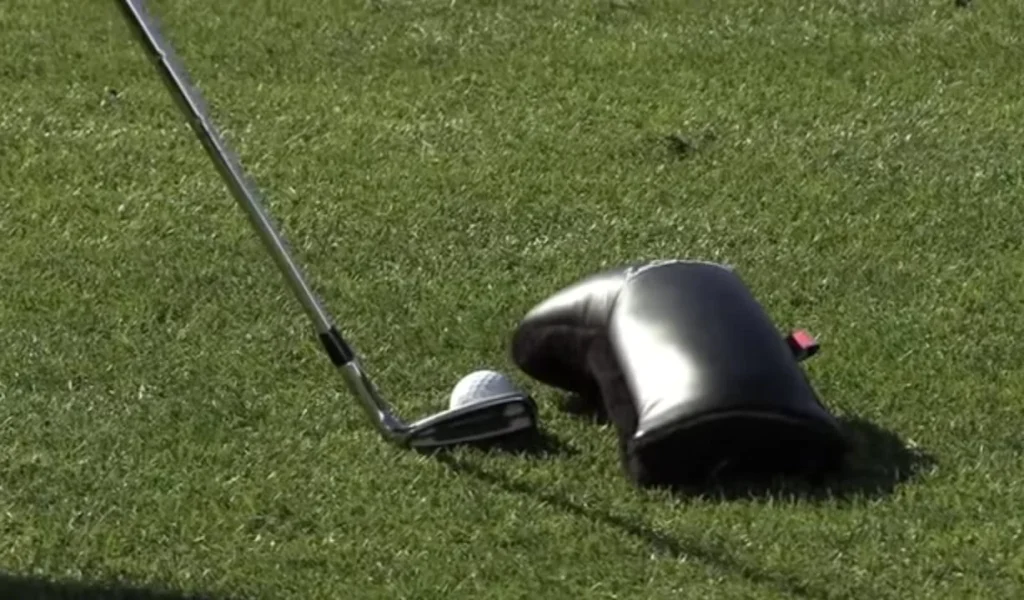
FAQs – Stop Shanking The Golf Ball
1. What is a Golf Shank?
Golf shanking occurs when the ball hits either the hosel or heel of a club and rolls erratically down its trajectory, producing unpredictable distance and accuracy issues as well as inconsistency within one’s golf performance. Shanking can have serious detrimental impacts on performance including decreased distance, accuracy, and even consistency for golfers.
2. Why do you shank the golf ball?
Shanking golf balls is often caused by multiple factors. Common ones include having hands too far forward, sliding instead of rotating hips during swinging motion, poor posture and spacing issues, and sudden shifts in swing dynamics. Aiming at these issues through proper technique and drills may help minimize this type of mishitting.
3. How do I stop shanking the golf ball?
Golfers looking to end the habit of shanking the golf ball can adopt several drills and tips to stop doing so: using markers to identify ball contact points; placing additional balls outside those being hit to refine the swing path; using plane sliders with formed grips for perfect plane slider shots; and maintaining proper swing mechanics, weight distribution, posture control.
4. How to avoid shanking the golf ball?
Avoiding shank requires paying careful consideration to various components of your golf swing, from keeping arms down to strengthening grips, keeping even weight distribution, and keeping chest height at impact, through toe flexing upward during initial stages and decreasing mental chatter during swing. These key tips should help prevent shank.
5. How to stop shanking the golf ball with irons?
Golfers looking to reduce iron ball shanking must address issues related to grip pressure, weight distribution, and hesitation during swing. Ensuring proper and controlled swing path along with fundamental iron play can contribute to greater consistency of results.
6. Why do I shank my 8 iron?
Shanking an 8-iron can be caused by any number of factors, including grip pressure, weight distribution issues, or hesitation during swing. Addressing these particular challenges with this club may help eliminate shanks.
7. What causes shanking the golf ball?
Attributes of shank include having hands too far forward, sliding instead of rotating hips, poor posture, and spacing issues, as well as sudden shifts in swing dynamics. Addressing these problems through drills or proper technique may help golfers overcome shanking altogether.
8. Why am I suddenly shanking the golf ball?
Sudden shanks may result from changes to swing dynamics, grip pressure, posture, or mental factors that suddenly change during play. Consistency across these aspects, along with responding quickly to any sudden modifications can help protect players against unexpected shanking incidents.
9. Does an open club face cause a shank?
An open club face can contribute to shanking. When the club face is left open during swinging, this increases the odds that its hosel will come into contact with the ball, potentially leading to a shank. Proper squaring of the club face during each shot is critical to eliminate this potential risk factor.
10. What causes a shank with a wedge?
Shanking with wedges often results from clubhead movement too close to the ball during the swing. Paying attention to clubhead position, and grip size and maintaining an even swing path will help prevent this kind of mishitting from occurring.

